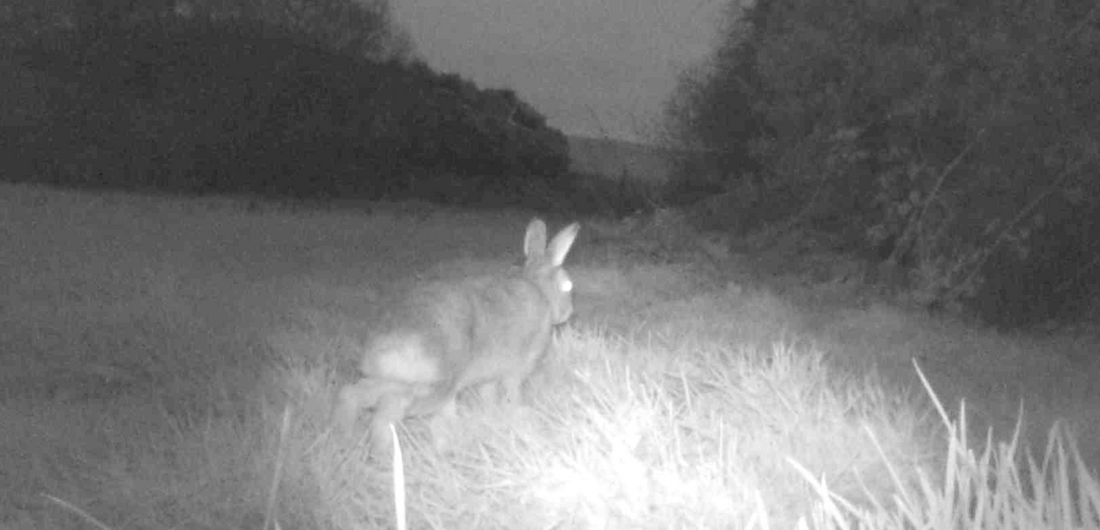On my quest to turn this place into a nature reserve I've become aquatinted with the local wildlife. They fascinate me. One family I've become very fond of is our band of hares. We rarely spot them, but sometimes the dogs sense their presence and then all of a sudden a brown thing darts into a hedge. I have, however, managed to capture them with the night-vision camera a few times. I've done a bit of a deep-dive into our illusive neighbours. Pop the kettle on...
The Irish hare, or Lepus timidus hibernicus, is a beloved and iconic symbol of Ireland. With their distinctive long ears and bounding gait, these creatures have captured the hearts of many throughout history. But what is the story behind the Irish hare? Where did it come from, and what kind of folklore surrounds it?
The Irish hare is a subspecies of the mountain hare, which is found throughout Europe and Asia. However, the Irish hare is unique in that it has adapted to the unique environment of Ireland. With its shorter ears and coat that changes colour with the seasons, the Irish hare is perfectly suited to the rugged and varied terrain of the Irish landscape.
In Irish folklore, hares are often associated with magic and mystery. They are said to have the ability to shape-shift into human form, and are sometimes seen as messengers or guides between the human and fairy worlds. The hare is also associated with the moon, and is sometimes depicted as a lunar creature.
The hare has been a symbol of Ireland for centuries. In fact, it is one of the oldest symbols of the country, dating back to the ancient Celts. The hare was seen as a symbol of fertility and prosperity, and was often depicted in Celtic art and mythology. In fact carbon dating of fossils has shown they were present in Ireland as far back as 28,000BCE.
In mediaeval times, the hare was also associated with nobility and power. The animal was often depicted in coats of arms and other heraldic symbols, and was seen as a symbol of speed, agility, and cunning.
The Irish hare has also played a role in Irish agriculture. In the past, farmers would hunt hares to control their population and protect their crops. However, in recent years, there has been a growing movement to protect the Irish hare and preserve its natural habitat.
Today, the Irish hare is a protected species in Ireland, and is seen as a symbol of the country's natural beauty and biodiversity. It is also a popular subject for artists and photographers, who are drawn to its graceful and elusive nature.
The Irish hare is a fascinating and beloved symbol of Ireland. With its unique adaptations, magical associations, and long history, it is a creature that has captured the imagination of many throughout the years. Whether you encounter one in the wild or see it depicted in art or literature, the Irish hare is sure to leave a lasting impression. They've certainly stolen my heart!

